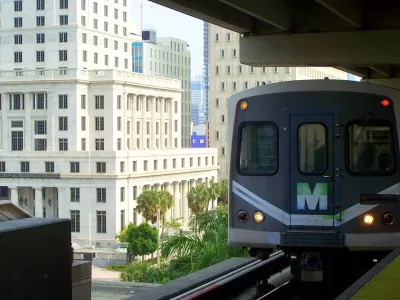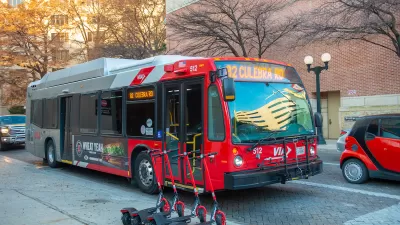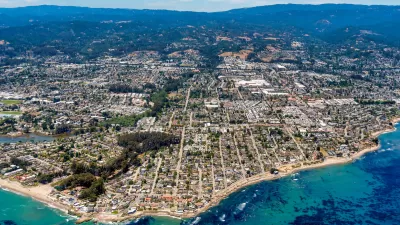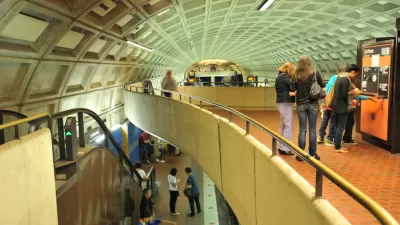A new tool in Miami could use broader application in cities around the country (hint hint).

Douglas Hanks reports on a new real-time tracker of Metrorail trains in Miami, created by the advocacy group Transit Alliance. The tracker uses online data from the county to calculate the number of late trains, presenting their findings in a colorful and useable online display.
On the Metrorail Audit page, each train is represented by a dot with a color representing the arrival time. While the page shows today's trains in chronological order, it also offers a view of the previous day's trains grouped by their arrival performance. The site also lets us know that at the time of this writing there have been 235 on-time trains, 618 late or bunched trains, and 111 ghost trains in the past week.
Jarrett Walker picked up the news of the Transit Alliance tracker and gave it a stamp of approval, noting especially the tracker's focus on headways (wait times) rather than on-time performance. Walker concludes his post about the tracker with an appeal for an institute "to create a database of reliability info across many agencies, searchable many ways — and always based on this headway reliability rather than on-time performance."
Hat tip to Rachel Dovey for sharing news of the Transit Alliance tracker.
FULL STORY: Will Metrorail get you there on time today? Now you can track late trains instantly.

Study: Maui’s Plan to Convert Vacation Rentals to Long-Term Housing Could Cause Nearly $1 Billion Economic Loss
The plan would reduce visitor accommodation by 25,% resulting in 1,900 jobs lost.

North Texas Transit Leaders Tout Benefits of TOD for Growing Region
At a summit focused on transit-oriented development, policymakers discussed how North Texas’ expanded light rail system can serve as a tool for economic growth.

Why Should We Subsidize Public Transportation?
Many public transit agencies face financial stress due to rising costs, declining fare revenue, and declining subsidies. Transit advocates must provide a strong business case for increasing public transit funding.

How to Make US Trains Faster
Changes to boarding platforms and a switch to electric trains could improve U.S. passenger rail service without the added cost of high-speed rail.

Columbia’s Revitalized ‘Loop’ Is a Hub for Local Entrepreneurs
A focus on small businesses is helping a commercial corridor in Columbia, Missouri thrive.

Invasive Insect Threatens Minnesota’s Ash Forests
The Emerald Ash Borer is a rapidly spreading invasive pest threatening Minnesota’s ash trees, and homeowners are encouraged to plant diverse replacement species, avoid moving ash firewood, and monitor for signs of infestation.
Urban Design for Planners 1: Software Tools
This six-course series explores essential urban design concepts using open source software and equips planners with the tools they need to participate fully in the urban design process.
Planning for Universal Design
Learn the tools for implementing Universal Design in planning regulations.
Ascent Environmental
Borough of Carlisle
Institute for Housing and Urban Development Studies (IHS)
City of Grandview
Harvard GSD Executive Education
Toledo-Lucas County Plan Commissions
Salt Lake City
NYU Wagner Graduate School of Public Service





























